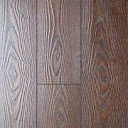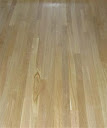www.a4architect.com
How to choose floor finishes.
There are many different types of floor finishes available for a home owner to choose from.
1.
Wood laminate Floor Boards.

These are floor finishes made of HDF[High Density Fiber] and look like wood strips.
They are made from wood fibers that have been highly compressed making it harder than the more common MDF Fiber boards. They come in various natural wood veneers such as peach, oak or mahogany. The strips are joint together by grooves and are laid on top of an underlay which is laid on the concrete ground surface.
They are easy to fix by care should be taken to leave expansion joints at the edges to cater for expansion in hot weather. Failure to this, the floor boards will warp upwards and dislocate from the grooves.
They come in various thicknesses usually from 8m to 16mm and are used depending on the human traffic envisaged. The thicker they are, the more durable they will be. They should be avoided in wet areas.
They are relatively low cost.
2.
Natural wood Floor finishes.
Parquet floor finish.
This consists of solid hardwood blocks fixed with an adhesive on the floor surface and arranged to form a pattern-the herringbone pattern is very common with this finish. The wooden blocks can be of various sizes and thicknesses.
Wood strips.

These are hardwood strips joined together to form a floor finish on the floor. This kind of flooring is simple and takes less time to fix. The strips are laid in random length.
3.
Ceramic tiles.

This type of floor finish is very common due to its durability and affordability and choice of design.
Ceramic tiles are the number one choice for wet areas such as kitchens and bathrooms due to its water-proofing capabilities.
Ceramic tiles also come in various sizes, patterns, colors and shapes.
Ceramic tiles are made from clay which is mined form the ground. The clay is crushed and dry-pressed when in a wet stage to form the shape using a pneumatic punching press. The tile is then dried and a glaze is applied on top. Glazing is the application of fine glass powder to the surface. The tile is then fired whereby the glaze particles melt into each other to produce a granite-like surface.
Italy is one of the world’s largest producers of ceramic tiles.
Ceramic tiles are easy to clean.
Ceramic tiles are also easy to fix. They are stuck onto the surface using cement mortar in a ratio of 1:3 and hand-placed and positioned using plastic spacers to create an evenness. There is a special ceramic tile cutter that is used to cut the tiles into shape.
Ceramic tiles vary in pricing depending on the quality, colour and pattern. They are relatively low cost.
4.
Granito tiles.

These are Porcelain ceramic tiles and are more durable and can be used in the out-door. They are made from porcelain granules and are fired at much higher temperatures than ceramic tiles.
They are common in sizes 450mm by 450mm up to size 600mm by 600mm.
They come in various colors and textures and are very aesthetically appealing and long lasting.
They are mainly used in corporate offices, banking halls, large shopping malls e.t.c since their large sizes [600mmby 600mm] can keep up with the large floor scales associated with commercial buildings and can also handle high human traffic in durability.
They are slightly more expensive than ceramic tiles.
5.
Granite Tiles.

The word ‘granite’ is derived from the Latin word ‘Granum ‘ meaning the granules that characterize the texture and appearance of granite.
Granite is an igneous rock that is mined from the ground and cut and polished to the required tile sizes.
Granite as a floor finish is very aesthetically appealing due to its natural look. Its also expensive compared to other manufactured finishes such as ceramics.
Its very long lasting. It comes in sizes of 1.2m by 2.4 m which can be cut into smaller size tiles as desired. It’s also commonly used to make kitchen top surfaces.
6.
Marble.

This is a metamorphic rock made from the joining of calcite[limestone] rock at high temperatures and pressure. This destroys any sign of fossils and sedimentary structure in the rocks to create characteristic swirls and veins from the impurities such as clay ,silt and iron oxides.
Marble comes in various colors shades according to the region that it is mined from.
It is mined, polished and cut to the desired sizes. It’s available in slab sizes of 1.2meters by 2.4 meters.
This is a very beautiful floor finish and very expensive. Since its very expensive to finish complete floor areas with marble, its usually placed in specific areas such as the entrance foyer where its most visible such as 5 Star Hotel receptions.
7.
Terrazzo floor finish

This finish is desirable where there is high traffic due to its durability. Its also water proof so it can be used in wet areas and its easy to clean. It can also be laid on the out doors.
Once the concrete floor is laid, a 1 inch hick layer of concrete is laid then patterns are created using plastic dividing strips embedded on top of the wet concrete surface. A final layer of marble-chips of various colors is laid within each panel in the dividing strip then a roller is rolled on the surface.
When the terrazzo is completely dry, its grinded and polished using a special machine.
8.
PVC floor tiles

The tiles come in an average size of 300mm by 300mm ant a thickness varying from 2.5mm to 4mm. The thickness used will depend on the human traffic that is envisaged for the particular floor.
These tiles are low cost and come in various colors.
Frank Gichuhi
www.a4architect.com


Leave a Reply